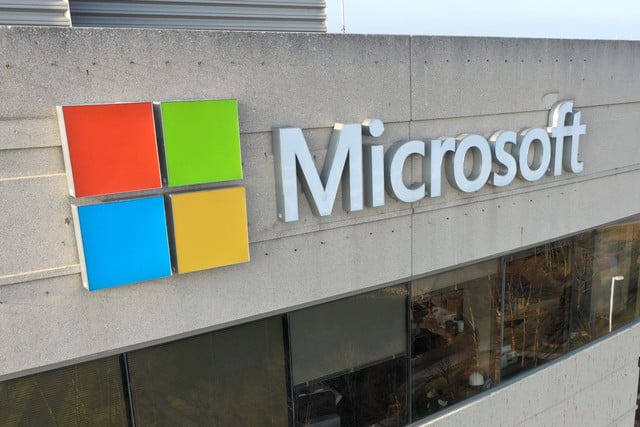
The top 10 signs that Office 365 and Azure have been compromised
As more systems move to the cloud the threat landscape becomes more complex and detecting events that require urgent attention is more difficult.
Many businesses are turning to AI to help and threat detection specialist Vectra AI has released a new report focusing on the top 10 threat detections seen across Microsoft Azure AD and Office 365 environments.

Microsoft is closing down its Azure Blockchain Service
Microsoft has announced that its Azure Blockchain Service is to close down this fall. The end date for the complete closure is September 10, but the company has already put a stop on new deployments and signups.
No big announcement has been made about the closure of the service which has been around since 2015 when Microsoft partnered with ConsenSys. The decision leaves existing users with just four months to find an alternative home for their ledgers.

Third-party marketplaces are driving hyperscale cloud adoption
Although many cloud providers offer a marketplace for additional products and services, it's the marketplaces of the big three 'hyperscale' clouds --Azure, AWS and Google Cloud -- that are by far the largest.
New research from enterprise search company Sinequa finds that these marketplaces are a big draw, with 93 percent of respondents reporting the marketplaces make the big three clouds more attractive as a platform.

Security is the top risk to enterprise multi-cloud adoption
New research from IT services provider Ensono finds that security is the biggest concern for IT professionals considering, or already using, multi-cloud strategies.
UK IT professionals rate security, governance and cost optimization as their top three concerns for multi-cloud strategies, while security, cost optimization and maintaining a positive end user experience are the top concerns in the US.

Why enterprises aren't properly addressing supply chain threats [Q&A]
Supply chain threats like the recent SolarWinds attack are becoming more of a concern as businesses are more reliant on smoothly functioning links with suppliers and customers.
A successful attack can have a devastating effect on an organization and its reputation, but by their very nature these are not easy threats to deal with.

How Malicious Azure apps can be used to target Office 365
Infected mail attachments and malicious links are common ways for hackers to try to infiltrate organizations.
Researchers at cybersecurity company Varonis have uncovered at new attack route in the form of malicious Azure apps. Azure apps don't require approval from Microsoft and, more importantly, they don't require code execution on the user's machine, making it easy to evade endpoint detection and antivirus systems.

Microsoft clarifies a slightly misleading claim about a leap in cloud service usage during coronavirus pandemic
Over the weekend, Microsoft post an article on its Azure blog announcing that there had been an astronomical 775 percent surge in the use of its cloud services. Despite the massive increase in traffic, the company added, uptime was good. But the blog post wasn't entirely correct.
Since we published a story about the claims, Microsoft has contacted us to say that it had not been "was not as clear as they intended to be with the previous statement". The company has provided updated stats explaining what it meant to say -- and it's rather different.

Microsoft wants developers to start coding in the cloud
As software developers, we tend to get pretty attached to the IDE we use. And it's not hard to see why -- it's the tool we rely on the most, which enables us to create fantastic products and be productive while doing so.
And this can create a problem when we're faced with a change in our flow. We do not like change. Don't get me wrong. Change is great -- as long as it's not happening on our machines. Microsoft, however, doesn't mind a challenge, as it just unveiled Visual Studio Online. Like its name suggests, it's an IDE in the browser. Unlike its name suggests, that's only a small part of it.

Trustwave launches advanced threat detection for Azure
As increasing numbers of businesses shift to cloud and multi-cloud environments, securing systems becomes a much more complex task.
For Microsoft Azure users Trustwave is launching new services to bolster threat monitoring, detection and response natively on the platform.

A primer on migrating SQL Server 2008/2008 R2 databases to the Azure cloud
System and database administrators are now being forced to do something about legacy SQL Server 2008 and 2008 R2 database applications. The reason is the end of Extended Support in July 2019. Extended Support will also end for its common companion Windows Server 2008 and 2008 R2 in January 2020. Upgrading to the latest versions is always an option, of course, but Microsoft is providing an attractive alternative when upgrades are not viable or cannot be cost-justified: Migrate the database to the Azure cloud and get three more years of Extended Security Update support at no additional charge over the standard virtual machine pricing.
This article highlights important considerations for migrating mission-critical legacy SQL Server 2008/R2 databases to the Azure cloud to help administrators make more informed decisions. Among the key considerations is knowing which options are and are not available.

Microsoft plows $1 billion into OpenAI partnership
Microsoft is investing $1 billion in a multi-year partnership with OpenAI-- a company co-founded by Elon Musk three years ago.
The partnership will see Microsoft and OpenAI working together to build new Azure AI supercomputing technologies. Microsoft says that it will focus on building a platform to create new AI technologies and deliver on the promise of artificial general intelligence (AGI).

Microsoft advises Azure customers to update Exim to avoid a Linux worm
Microsoft has issued a warning to Azure customers using Linux Exim email servers running Exim version 4.87 to 4.91.
The company explains that these versions of Exim are vulnerable to a critical Remote Code Execution (RCE) security flaw and need to be updated to prevent the spread of a worm.

Microsoft and Oracle connect their clouds
Two of the giants of enterprise cloud technology have today announced a cloud interoperability partnership, enabling customers to migrate and run mission-critical enterprise workloads across Microsoft Azure and Oracle Cloud.
Enterprises can now seamlessly connect Azure services, like Analytics and AI, to Oracle Cloud services, like Autonomous Database. By enabling customers to run one part of a workload within Azure and another part of the same workload within the Oracle Cloud, the partnership delivers a highly optimised, best-of-both-clouds experience.

Microsoft, Dell and VMware become partners in the cloud
Microsoft has announced that it is extending its partnership with Dell in a move that will enable Microsoft Azure customers to take advantage of VMware virtualization in the cloud.
The company is also bringing VMware into the Microsoft 365 ecosystem to extend the capabilities of its Windows Virtual Desktop too. It will also bring new management and security options to Microsoft Intune.

Windows Virtual Desktop preview goes public
Back in September last year Microsoft announced the launch of its Virtual Desktop to allow Windows to be run in the cloud.
At the time, however, it was only a private preview. Today the public preview launches, so anyone with an Azure subscription can try out the service.
